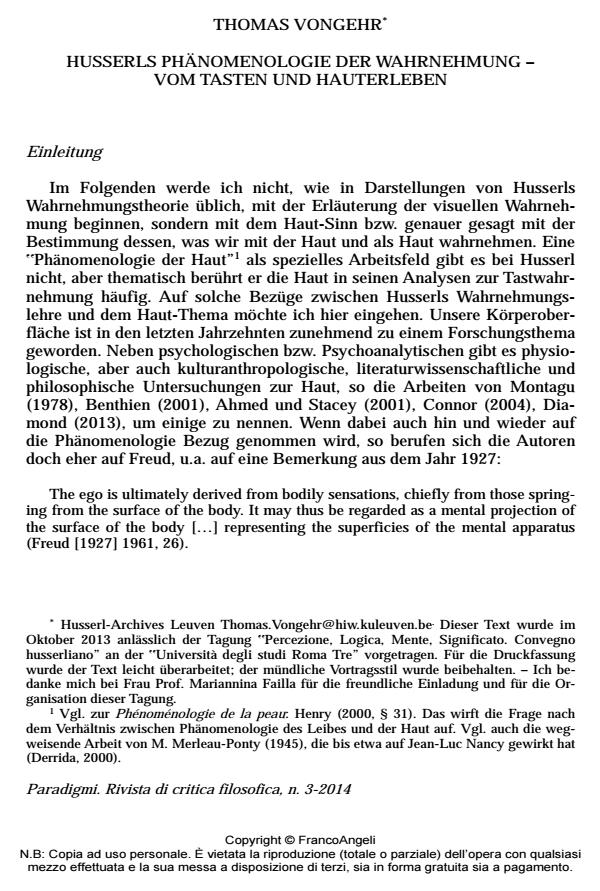Husserlian Phenomenology of Perception. Skin’s and Tactile "Erleben"
Journal title PARADIGMI
Author/s Thomas Vongehr
Publishing Year 2015 Issue 2014/3
Language Deutch Pages 18 P. 19-36 File size 104 KB
DOI 10.3280/PARA2014-003003
DOI is like a bar code for intellectual property: to have more infomation
click here
Below, you can see the article first page
If you want to buy this article in PDF format, you can do it, following the instructions to buy download credits

FrancoAngeli is member of Publishers International Linking Association, Inc (PILA), a not-for-profit association which run the CrossRef service enabling links to and from online scholarly content.
The Author wishes to underline skin’s tactile perception as a complete phenomenological experience which concerns perception of the external world (things), of one’s self (to feel one’s own skin) and perception of the other. Nature, self and intersubjectivity become the three fundamental stages of perceptive experience and coincide with the three phenomenology’s pivotal issues. Thus skin’s phenomenology opens a critic dialogue with models that limit skin’s tactile experience to the perception of a mere container of the body.
Keywords: Perception, skin, body, psychoanalysis, physiology, Self, world, intersubjectivity
Thomas Vongehr, Husserls Phänomenologie der Wahrnehmung - Vom Tasten und Hauterleben in "PARADIGMI" 3/2014, pp 19-36, DOI: 10.3280/PARA2014-003003